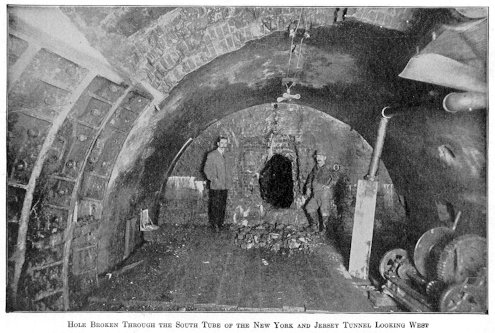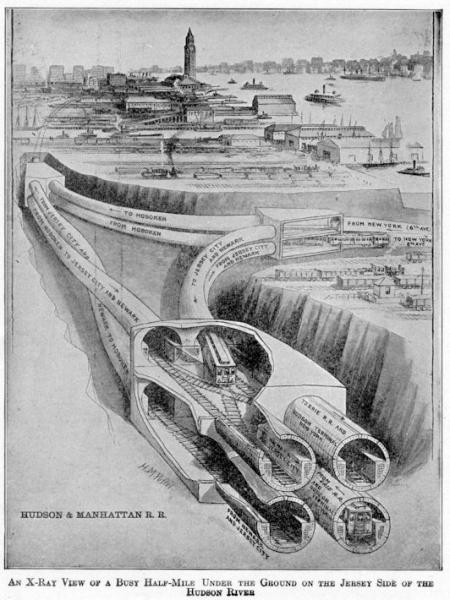The Holland Tunnel
Today, we tell a familiar story. The University of Houston's College of Engineering presents this series about the machines that make our civilization run, and the people whose ingenuity created them.
I want to tell you about the Holland Tunnel, but I should warn you: the story is a lot like other stories about great engineering works. The plot goes like this:
Leaders acknowledge a large public need. They debate strategy and try to set up a plan for solving the problem. Then a visionary separates himself from the pack. His project is grander and bolder than anyone had expected. He convinces skeptics and puts the project on the road to completion. Finally, he dies on this side of his Jordan River. Others are left to complete the dream.
That's how it was with Hoover Dam, the Brooklyn Bridge, the Great Eastern steamship, and the Mount Palomar Telescope. That's also the way it was with the Holland Tunnel. In 1906 the Island of Manhattan, its population mushrooming, found it harder and harder to bring in supplies. After 13 years of discussion, a young civil engineer named Clifford Holland was given the job of drilling a highway tunnel under the Hudson River. But by now a tunnel of this kind faced a brand new problem -- one that earlier tunnels hadn't faced. Now the automobile had come into its own. This tunnel would have to carry 40,000 trucks and cars each day. That meant huge quantities of carbon monoxide gas had to be cleared out of it.
Holland began drilling a pair of 30-foot holes, almost two miles long, under the Hudson River. The most startling feature of the tunnel was entirely new. Holland provided it with a ventilation system that used four million cubic feet of fresh air each minute to flush out exhaust gases.
The project was enormous -- a constant string of problems had to be solved; new technology had to be created; and skeptics had to be fended off. It took a terrible toll on Holland. By 1924 he had it under control, but he was suffering from nervous exhaustion. He retreated to a sanitarium, where a heart attack finished him off. He was only 41.
Calvin Coolidge opened the tunnel in 1927. On the first Sunday it carried 52,000 vehicles. Today it carries 80,000 per day. Holland's controversial ventilation system, conceived to supply half that number, still handles them without trouble.
You've heard the story in other forms, but it doesn't wear out. We can always welcome the story of a heroic technology carried out by a self-sacrificing hero. And there are more people like that to admire than we might first think.
I'm John Lienhard, at the University of Houston, where we're interested in the way inventive minds work.
(Theme music)
McKay, E.M., Tunneling to New York. American Heritage of Invention and Technology, Fall 1988, pp. 22-31.
This episode has been greatly revised as Episode 1698.


Holland Tunnel images in The World Book of Knowledge a year before it was finished
Top Image: Breaking through to join the two sides of the Tunnel.
Bottom Image: Schematic diagram of the Jersey side of the Tunnel.